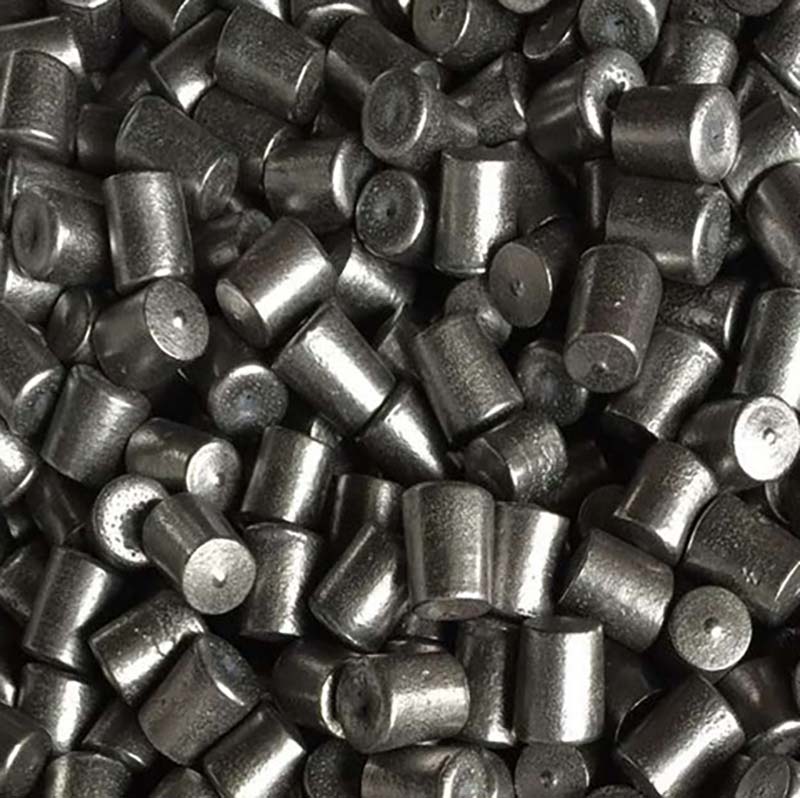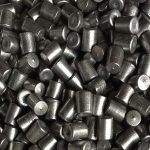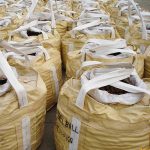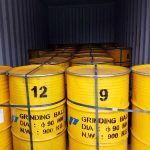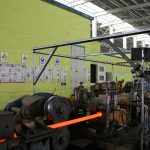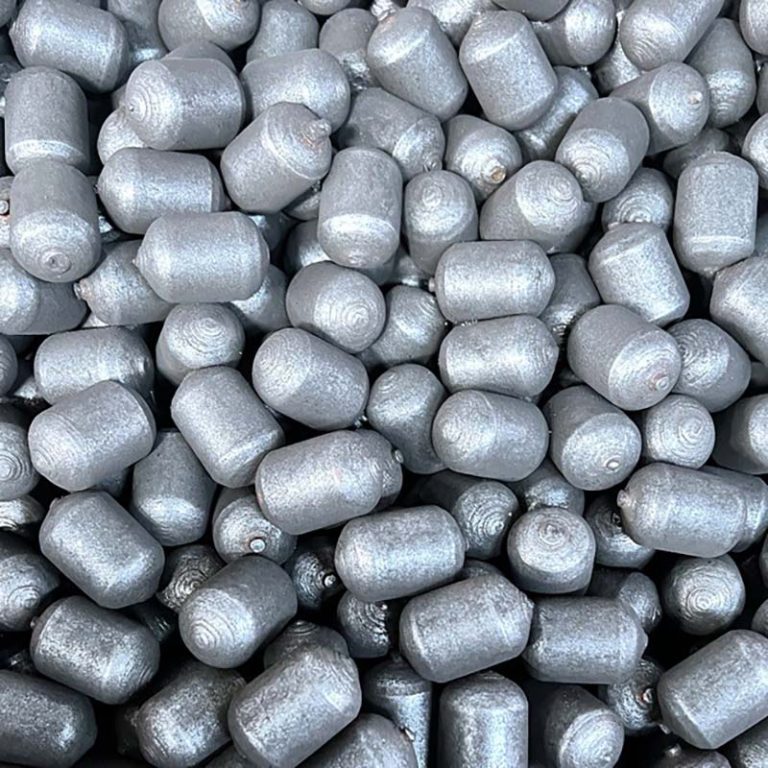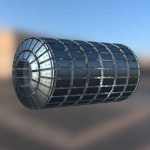Mill Grinding Balls, Grinding Cylpebs and Grinding Rods

High Chromium Casting Steel Cylpebs
PRODUCT PARAMETERS
Diameter(mm): 17-150mm
Diameter tolerance(mm): +1,-1
Length tolerance(mm): +2,-2
Hardness(HRC): >58
Breakage rate: <1%
Drop Test(times): ≥12000
Description
Diameter tolerance and Length tolerance
| Diameter(mm) | 8×10 | 10×12 | 12×14 | 14×16 | 16×18 | 18×20 | 20×25 |
| 25×30 | 30×35 | 35×40 | 40×45 | 45×50 | 50×55 | 55×60 | |
| Diameter tolerance(mm) | +1,-1 | ||||||
| Length tolerance(mm) | +2,-2 | ||||||
Technical specification
| Material Gr. | Diameter(mm) | Hardness(HRC) | Breakage rate | Impact value(J/cm²) | Drop times(times) | Micro structure |
| ZQCr26 | 17-150 | >58 | <1% | >7 | ≥12000 | M+C |
| ZQCr20 | 17-150 | >58 | <1% | >6 | ≥12000 | M+C |
| ZQCr15 | 17-150 | >58 | <1% | >5 | ≥12000 | M+C |
| ZQCr12 | 17-150 | >58 | <1% | >3.5 | ≥12000 | M+C |
| ZQCr8 | 17-150 | >58 | <1% | >3 | ≥12000 | M+C |
Chemical composition
| Brand | Chemical composition(%) | ||||||||
| C | Si | Mn | Cr | Mo | Cu | Ni | P | S | |
| ZQCr26 | 2.0-3.3 | 1.2max | 0.3-1.5 | >23.0-30.0 | 0-3.0 | 0-1.2 | 0-1.5 | ≤0.10 | ≤0.06 |
| ZQCr20 | 2.0-3.3 | 1.2max | 0.3-1.5 | >18.0-23.0 | 0-3.0 | 0-1.2 | 0-1.5 | ≤0.10 | ≤0.06 |
| ZQCr15 | 2.0-3.3 | 1.2max | 0.3-1.5 | >14.0-18.0 | 0-3.0 | 0-1.2 | 0-1.5 | ≤0.10 | ≤0.06 |
| ZQCr12 | 2.0-3.3 | 1.2max | 0.3-1.5 | >10.0-14.0 | 0-3.0 | 0-1.2 | 0-1.5 | ≤0.10 | ≤0.06 |
| ZQCr8 | 2.1-3.3 | 2.2max | 0.3-1.5 | 7.0-10.0 | 0-1.0 | 0-0.8 | - | ≤0.10 | ≤0.06 |

1. Definition and Composition
- High Chrome Alloy: Typically contains 10-30% chromium, enhancing hardness and corrosion resistance. Additional elements like carbon (1.5-3.5%), molybdenum, and nickel may be included to improve wear resistance, strength, and toughness.
- Casting Steel: Manufactured via casting molten alloy into molds, followed by heat treatment (quenching and tempering) to achieve desired microstructure.
- Cylpebs: Cylindrical grinding media (25-100mm in length/diameter) with a slightly conical shape, offering increased surface area compared to spherical balls.
2. Key Properties
- Hardness: 58-68 HRC due to martensitic matrix and chromium carbides.
- Wear Resistance: Superior due to hard carbides (e.g., Cr7C3) embedded in the microstructure.
- Impact Toughness: Balanced through heat treatment to prevent brittleness.
3. Manufacturing Process
- Casting: Molten alloy poured into molds to form cylpebs.
- Heat Treatment: Quenching (oil/air) forms martensite; tempering reduces brittleness.
- Finishing: Surface grinding/polishing for dimensional accuracy.
4. Applications
- Industries: Mining (ore grinding), cement (clinker processing), coal pulverization, ceramics.
- Advantages: Extended lifespan (2-3x longer than low-chrome media), reduced downtime, higher grinding efficiency.
5. Performance Considerations
- Shape Efficiency: Cylindrical shape enhances grinding contact and material flow in mills.
- Size Distribution: Tailored to mill specifications for optimal performance.
6. Standards and Quality Control
- Standards: ASTM A532 (wear-resistant cast irons), ISO 9001 for quality management.
- Testing: Hardness (Rockwell), impact (Charpy), microstructure analysis, spectroscopic composition checks.
7. Environmental and Safety Aspects
- Sustainability: Longer lifespan reduces waste generation.
- Recycling: Spent cylpebs can be remelted to recover chromium.
- Safety: Handling requires precautions to avoid hexavalent chromium exposure during production.








REQUEST A QUOTE
FAQs
Forged grinding balls are made by heating and shaping high-carbon or alloy steel under high pressure, resulting in superior hardness, impact resistance, and longevity. Cast grinding balls are produced by melting and pouring metal into molds, offering a cost-effective solution for less demanding grinding environments. Forged balls excel in high-impact mining operations, while cast balls are ideal for lower-impact scenarios like cement or coal grinding.
Choose forged balls for high-impact, large-scale mining (e.g., copper, gold) where durability and low wear rates are critical.
Choose cast balls for cost-sensitive applications with softer materials (e.g., limestone, coal) or smaller operations.
Make amazing 60-degree bevel cuts with our 8-1/4 in. SKIL Worm Drive Skilsaw model SPT78W-01. This Skilsaw is powered by our largest 15 amp Dual-Field™ high torque motor so you will make the last cut as precisely as you did the first cut. Exclusive 60-degree bevel. High torque Dual-Field™motor. Legendary SKIL durability.
Yes! We offer fully customizable solutions. Specify your required diameter (e.g., 20–150mm for balls), hardness (HRC 50–65), and material composition to match your mill’s operating conditions (e.g., ore hardness, rotation speed).
- Grinding Rods: Made from high-carbon steel or alloy steel, heat-treated for optimal wear resistance and toughness.
- Mine Liners: Constructed from high-manganese steel, chromium steel, or composite alloys to withstand abrasion and impact in mills.
We ship globally, with major clients in South America, Africa, Australia, North America, and Southeast Asia.
Standard Products: 15–25 days after order confirmation.
Customized Orders: 25–35 days, depending on specifications.
Shipping: Delivery times vary by destination
Grinding balls/rods: Packed in steel drums or bulk bags with anti-rust treatment.
Mine liners: Wooden crates or pallets with waterproof wrapping.
We enforce strict quality control:
100% surface defect checks before shipment.
Raw material inspection (spectral analysis).
Hardness and impact testing (Rockwell, Charpy tests).
We enforce strict quality control:
100% surface defect checks before shipment.
Raw material inspection (spectral analysis).
Hardness and impact testing (Rockwell, Charpy tests).

